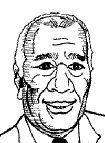
Hartley NeitaUP TO the first half of the last century, black Jamaicans secretly wished they were born white.
Little girls never knew black dolls, playing instead with Shirley Temple dolls and wishing they were Sleeping Princesses and Cinderellas, and little boys saw the Princesses Elizabeth and Margaret-Rose as the ideals of beauty. Young ladies in their late teens and over read Seventeen and Vogue magazines, and powdered their faces thick with Pond's (face powder), while young men in that age group cut slim paths in their hair to coiffeur it like screen stars Tyrone Power and Alan Ladd and smeared it with Vaseline and other pomades which would give their hair the sheen they saw in the photographs of these movie idols.
Jamaican young women who were educated at secondary schools went afterwards to Duff's and other secretarial training institutes. Those who were brown and white joined the staff of the commercial banks and firms such as Bryden and Evelyn and organisations such as the Jamaica Tourist Board and the Jamaica Chamber of Commerce. Those who were black joined the Civil Service.
Other girls who only received elementary education went to Carron Hall Vocational School, Shortwood and Bethlehem Training Colleges for teachers, and the Kingston Public Hospital to be trained as nurses. Some were employed as sales clerks and cashiers.
Young men with an elementary education either joined the Police Force or went to Mico College for training as teachers. Those with a secondary education, and were brown or white, were articled to solicitors and surveyors. Brown and white young men who joined the Civil Service were placed in the Colonial Secretary's Office while those of a darker shade were posted to the Treasury, Collector-General or Public Works departments.
The Jamaican theatre was dominated by expatriates. Black Jamaicans were not welcome guests in our hotels so they went to guesthouses when they had to visit our tourist areas on business.
Members of some churches did not want black parsons and the bishops were "white as driven snow". Captains of the Jamaica cricket teams were brown and white, and the teams themselves had more salt than pepper.
The 1940s and 1950s saw a number of young rebels who felt the need to change the old order. Roger Mais painted a black portrait of Cain, the son of Adam and Eve, and stirred society's wrath. Vic Reid and Roger Mais began to write short stories and novels about black courage. Poets like George Campbell began to glorify black beauty, and playwrights like Archie Lindo, A.E.T. Henry and Frank Hill told stories on stage of black Jamaican life. Journalist Evon Blake got a white friend to pay the fee for swimming at the Myrtle Bank hotel and dived in the pool, and was soon swimming in lonely splendour as other guests hurriedly left it. Editor Theodore Sealy promoted a beauty contest for black Jamaican girls and made them see themselves as beautiful for the first time.
The 1950s saw the first step by Jamaicans into international politics when Norman Manley banned trade with South Africa. Trade with that country was not much but the significance of that decision was not lost on the South African Government when they sought to demand that England, our Imperial masters, should overturn the decision. Ten years later it was Hugh Shearer's turn when he refused to provide funds to the Jamaica Cricket Board of Control for a visit of South African cricketers to play here, and later led the
non-white Commonwealth countries in their demand that Britain impose its authority on the Rhodesian Government who had seceded from British rule and imposed a white-led authority over the black population of that country.
Leila Robinson's fight to get South Africa expelled from world netball, Sandra Kong's withdrawal from the Miss World beauty contest when it was brought to her attention that a Miss South Africa was a contestant, and Michael Manley's relentless assault on the apartheid policies of that country, also helped black Jamaicans to see black as beautiful.
There are some, today, among them men who leap-frogged from the canefields to the corporate boardrooms, who ask why celebrate a month devoted to black history. Well, I can remember and it was not long ago when the announcers on Radio Jamaica had alien accents. I can remember the pride Jamaicans of all creeds felt with the elevation of Percival Gibson and S.U. Hastings, two black men, as Bishops of the Anglican and Moravian churches, and of Samuel Carter, of Indian descent, to become Roman Catholic Archbishop. Today, the managers of our banks can be black, and when I go to my doctor's office I can see my women on the covers of international fashion magazines.
Man, I feel good every February.














